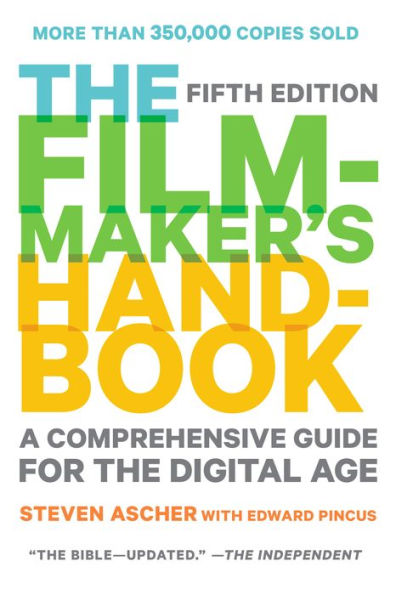Table of Contents
Preface xi
1 Introduction to Digital and Film Systems 1
Digital Videos Systems
The Video Format
What Is Compression?
Comparing Videos Formats
High Definition Digital Formats
Digital Cinematography Systems
Standard Definition Digital Formats
Standard Definition Analog Formats
Recording to Memory Cards, Drives, and Discs
Sound Recording for Video
Video Editing
Film Systems
Comparing Film Formats
Sounds Recording for Film
Film Editing
Shooting Digital Versus Shooting Film
2 Before You Begin Production 53
Getting Your Movie Off the Ground
Formats for the Big Screen and the Small(er) Screen
The "Look" of the Movie
The Impact of Sensor Size and Film Gauge
Color and Sensitivity to Light
Sharpness and Focus
Aspect Ratio Choices
Frame Rate and Scanning Choices
Choosing a Camera
Planning Your Workflow
Managing Data in Production and Post
The Importance of Sound
Coping with Technology
3 The Video Camcorder 102
Initial Settings
Viewfinder and Monitor Setup
Picture Controls
Recording to Cards, Drives, and Optical Discs
Types of Media
Managing Data on the Shoot
Recording to Digital Tape
Operating the Camcorder
Batteries and Power Supplies
Camera Sensitivity
Other Camera Features
4 The Lens 141
Focal Length and Perspective
The Light-Gathering Power of the Lens
Focusing the Image
Choosing a Zoom Lens
Prime Lenses
Close Focusing
Lens Quality and Condition
The Lens Mount
Lens Seating Problems
Care of the Lens
5 The Video Image 185
Forming the Videos Image
The Digital Video Camera's Response to Light
Understanding and Controlling Contrast
What is Gamma?
Gamma Options When Shooting
Video Color Systems
Some Image Manipulations and Artifacts
Video Monitors and Projectors
Timecode
Digital Video Recording-How It Works
Pixels and Resolution
Working with Digital Data
Digital Connections
Hard Drive Storage
RAIDs
File Formats and Data Exchange
Digital Compression
Compression Methods
A Few Common Codecs
6 The Film Camera 253
The Film Gate and Shutter
Camera Speed and Motors
Viewing Systems
The Reflex Viewfinder
Camera Film Capacity
Other Camera Features
Camera Tests and Maintenance
7 The Film Image 271
Properties of the Film Stock
Contrast of the Image
Sharpness
Choosing a Raw Stock
Packaging, Handling, and Purchasing
The Light Meter and Exposure Control
Light Meters
Taking Readings
Exposure and Film Stocks
The Film Lab During Production
Screening the Rushes
8 Color and Filters 304
Color
Color Temperature
Filters
Matte Boxes and Lens Shades
9 Shooting the Movie 321
The Goals of Production
Composition and Shot Selection
The Moving Camera
Style and Direction
Dramatic Films
Documentaries
Preparing for Production
Preparing the Script and Approach
Scheduling and Planning
Organizing the Production
The Equipment Package
In Production
Logging
Supporting the Camera
Slow Motion, Fast Motion, and Judder
Slow Motion
Fast Motion
Judder or Storbing
Shooting TVs and Video Monitors
Shooting in 3D
10 Sound Recording Systems 402
Sound
How Audio Is Recorded
Analog Audio Recording
Digital Audio Recording
Types of Audio Recorders
Digital Audio Recorders
Audio in the Video Camera
The Analog Tape Recorder
The Microphone
Audio Connections
11 Sound Recording Techniques 435
Preparing for a Shoot
Gathering Gear
The Sound Recordist's Role
Recording Technique
Setting the Recording Level
Music, Narration, and Effects
Other Recording Issues
Recording Double System for Video and Film
Syncing Audio and Picture
Operating a Double-System Recorder
12 Lighting 471
Light
Lighting Equipment
Bulbs
Types of Lighting Instruments
Lighting Technique
Lighting Styles
Positioning Lights
Controlling Lighting Contrast
Lighting and Color
Special Lighting Effects
Location Lighting
13 Picture and Dialogue Editing 521
Some Film Theory
Approaches to Editing
Dialogue Editing
The Editing Process
Titles
14 Editing Digital Videos 544
Components of a Nonlinear Editing System
How the NLE Plays and Edits Media
Postproduction Workflow
What Format or Resolution to Edit In?
Importing and Organizing Your Material
Importing Files
Capturing from Tape
Creating and Editing Sequences
Basic Sound Editing
Working with Double-Systems Sound
Basic Video Effects
Titles, Graphics, and Stills
Mixing and Converting Formats
Working with 24p and Pulldown
Editing 24p Footage
Finishing and Output
Managing Media
Exporting a File
Output to Tape
Creating a DVD or Blu-ray
Creating a Digital Cinema Package
Color Correction
Tape Editing
The EDL and Online Editing
15 Sound Editing and Mixing 635
The Sound Editing Process
Sound Editing Tools
Sound Editing Technique
Music
Some Sound Editing Issues
Preparing for the Mix
The Sound Mix
Level and Dynamic Range
Frequency Range and EQ
Other Sound Processing
Mix Formats
Deliverables
16 Working with Film in Postproduction 675
Overview of Film-Video Transfers
Some Film-Digital Workflows
Film-to-Digital Transfer Devices
Telecine Options and Controls
Recording Format and Scanning Options
Image Control
Audio Options
Film Transfer Data
Booking a Transfer
Editing Film Digitally
Preparing to Edit
Editing Considerations for Traditional Film Finish
When You're Done with the Offline Edit
From Digital to Film
Preparing for the Digital-to-Film Transfer
Traditional Film Conforming and Blowups
Preparing the Original for Printing
Blowups
Making Film Prints
Printing Basics
Answer Prints
Intermediates
Release Prints
Sound for Film Prints
Analog Optical Tracks
Digital Sound Tracks
Film Projection
17 Producting and Distributing the Move 718
Developing the Project
Funding Sources
Budgets
Business Arrangements
Legal and Copyright Issues
Protecting Your Work
Releases for Real People, Places, and Things
Using Copyrighted Material
Distribution and Marketing
A Last Word
Appendices 767
A Adjusting a Video Monitor
B Data Rates and Storage Needs for Various Digital Formats
C Depth of Field Tables
D Hyperfocal Distance Table
E Angle of View in Different Formats
Bibliography 791
Websites 794
Index 797



